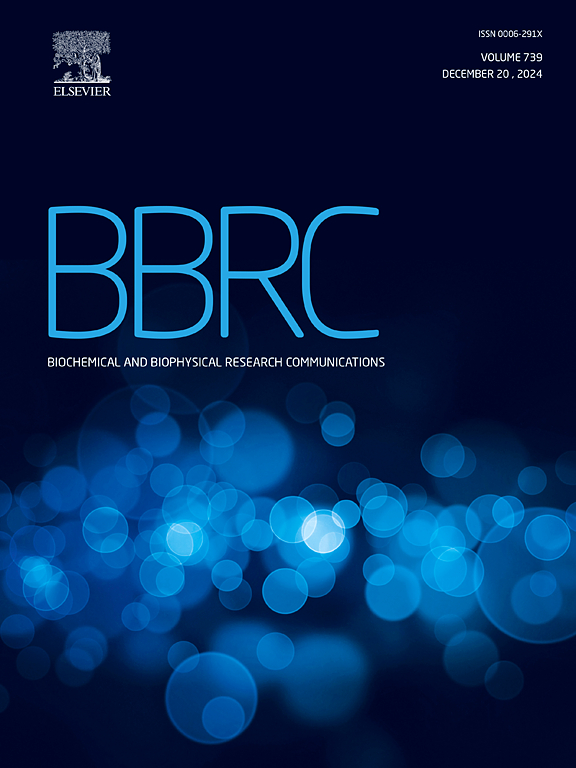High-resolution crystal structure of PD-1 in complex with retifanlimab, the FDA-approved immune checkpoint blocking antibody for treating Merkel cell carcinoma
IF 2.2
3区 生物学
Q3 BIOCHEMISTRY & MOLECULAR BIOLOGY
Biochemical and biophysical research communications
Pub Date : 2025-01-01
DOI:10.1016/j.bbrc.2024.151106
引用次数: 0
Abstract
Retifanlimab is a humanized monoclonal antibody that specifically targets programmed cell death protein 1 (PD-1), an essential immune checkpoint that modulates T-cell immune responses. Several anti-PD-1 antibodies have been market-approved, marking a significant advancement in the treatment of diverse tumor types by restoring the T-cell immune response. Recently, the US FDA approved retifanlimab for treating metastatic or recurrent locally advanced Merkel cell carcinoma. We present the crystal structure of PD-1 in complex with the retifanlimab Fab at a resolution of 1.54 Å to elucidate the structural basis for the mechanism of action of this antibody. This work clarifies the detailed interactions and conformational alterations that occur upon antibody binding. The epitope of retifanlimab partially overlaps with the ligand binding site, and its binding induced unique conformations of the flexible loops within PD-1, including BC, C'D, and FG loops, thereby optimizing interactions with the antibody. A thorough analysis of its interaction with PD-1 and other FDA-approved anti-PD-1 antibodies may provide valuable insights into the rational design of enhanced therapies to regulate immune responses in cancer treatment.
PD-1与retifanlimab复合物的高分辨率晶体结构,retifanlimab是fda批准用于治疗默克尔细胞癌的免疫检查点阻断抗体。
Retifanlimab是一种人源化单克隆抗体,特异性靶向程序性细胞死亡蛋白1 (PD-1), PD-1是调节t细胞免疫反应的重要免疫检查点。几种抗pd -1抗体已获市场批准,这标志着通过恢复t细胞免疫反应来治疗多种肿瘤类型的重大进展。最近,美国FDA批准retifanlimab用于治疗转移性或复发性局部晚期默克尔细胞癌。我们以1.54 Å的分辨率给出了PD-1与retifanlimab Fab复合物的晶体结构,以阐明该抗体作用机制的结构基础。这项工作澄清了抗体结合时发生的详细相互作用和构象改变。retifanlimab的表位与配体结合位点部分重叠,其结合诱导PD-1内独特的柔性环构象,包括BC、C - d和FG环,从而优化了与抗体的相互作用。深入分析其与PD-1和其他fda批准的抗PD-1抗体的相互作用,可能为合理设计增强疗法以调节癌症治疗中的免疫反应提供有价值的见解。
本文章由计算机程序翻译,如有差异,请以英文原文为准。
求助全文
约1分钟内获得全文
求助全文
来源期刊
CiteScore
6.10
自引率
0.00%
发文量
1400
审稿时长
14 days
期刊介绍:
Biochemical and Biophysical Research Communications is the premier international journal devoted to the very rapid dissemination of timely and significant experimental results in diverse fields of biological research. The development of the "Breakthroughs and Views" section brings the minireview format to the journal, and issues often contain collections of special interest manuscripts. BBRC is published weekly (52 issues/year).Research Areas now include: Biochemistry; biophysics; cell biology; developmental biology; immunology
; molecular biology; neurobiology; plant biology and proteomics

 求助内容:
求助内容: 应助结果提醒方式:
应助结果提醒方式:


